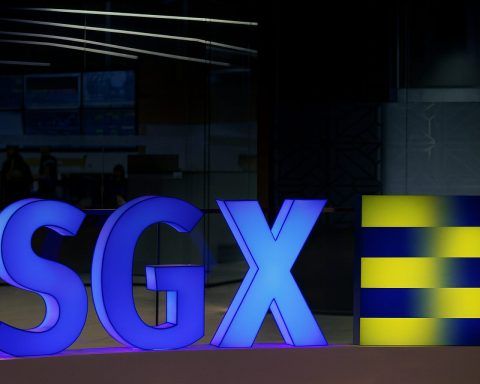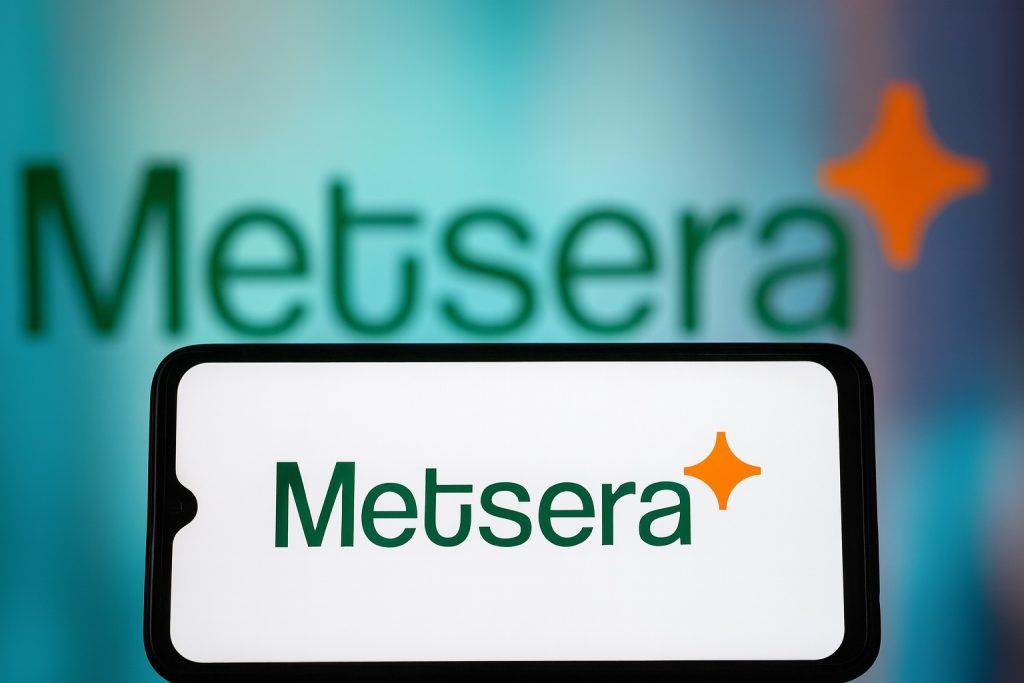- Silver prices surge: Spot silver is trading near $48–49 per ounce (early Oct.), its highest since 2011, marking roughly a 60–70% gain in 2025 [1] [2]. This historic rally (silver’s biggest annual rise since 2010 [3]) is driven by persistent supply deficits and safe-haven demand amid economic uncertainties.
- Bullish forecasts: Market analysts see more upside. UBS’s Shree Kargutkar notes “silver’s solid uptrend” and calls this “just the beginning” [4]. Zain Vawda (OANDA) expects silver to reach $55/oz within months [5], while Metals Focus’ Matthew Piggott predicts it could even top $60 by 2026 [6]. Many forecasters peg near-term targets in the $40–50 range [7], warning a break above $50 may trigger a “generational” jump toward $75 or $100 [8].
- Miners and markets: Silver mining stocks have exploded with the rally. For example, Pan American Silver (NYSE: PAAS) and First Majestic Silver (NYSE: AG) have soared this year. Analysts have raised their targets – Scotiabank now sees PAAS at $47 and CIBC at $62 [9], and First Majestic’s consensus 12‑month target is about $17 (with some as high as $22) [10]. (For context, PAAS has climbed roughly 60+% YTD, mirroring the metal’s surge.) Exchange-traded funds and futures are likewise seeing record inflows and long positions, reflecting strong investor appetite.
- “Silver tsunami” workforce crisis: On the demographic side, a different “Silver Tsunami” is unfolding. Roughly 10,000 Baby Boomers turn 65 every day, translating into a $10 trillion wave of small-business exits over the next two decades [11]. Project Equity reports that over half of all U.S. businesses with employees have owners over age 55 [12]. Yet fewer than 40% of these owners have any succession plan [13]. As TeamShares notes, 40% of current small-business owners are Boomers and millions will retire soon, but “less than a third…have an exit plan” [14]. This creates a looming succession crisis: one estimate says 1 in 3 Americans relies on income from a Boomer‐owned business [15], meaning many jobs and community businesses are at stake.
- Succession risk: Experts warn that many small firms could simply shutter without an owner or buyer. Project Equity explains that with so many retiring owners and few prepared buyers, “some [businesses] will quietly close down” or get absorbed by distant companies that may lay off staff [16]. Joe Lonsdale (8VC) describes it as “the largest transfer of business ownership in American history,” and notes it could trigger a “mass extinction event” for local businesses unless new funding and platforms emerge [17] [18].
- Adapting & solutions: Policymakers and industry leaders are scrambling for answers. Innovations include tax incentives for ESOPs and search funds to connect retiring owners with buyers. For instance, Lonsdale’s network is backing companies like Mainshares to match skilled operators with for-sale businesses [19]. Research shows employee ownership can preserve jobs and community wealth – when local businesses become employee-owned, they “create high quality jobs… and boost business survival rates” [20]. Other experts argue the broader economy must adapt: The Sun Malaysia notes that aging is “a structural, predictable…crisis” that calls for redefining productivity [21] [22]. This means incentivising later retirement, promoting flexible/part-time work and retraining for seniors, and leveraging automation and AI to offset labor shortages [23] [24].
- Real estate impact: The silver generation is already reshaping housing. A Florida Realtors report confirms “more than 70 million Americans are 65+,” and boomers now lead both home buying and selling – driving trends like downsizing, aging-in-place and multigenerational living [25]. This “silver wave” is putting pressure on housing supply and demand, especially in Sunbelt markets where retirees cluster.
In sum, two very different “silver tsunamis” are converging: one in markets, one in Main Street demographics. On the metals side, silver’s unprecedented rally has industry analysts scrambling. “Safe-haven demand, Fed rate cuts, and slack supply” have fueled the climb [26], and chart technicians point out that breaking $50 could spark further momentum. Many experts caution volatility but see room to run: as MarketBeat notes, major banks have repeatedly hiked mining stocks’ targets in October (e.g. PAAS to $47–62) [27]. Still, some analysts urge caution, pointing to the US government shutdown in early Oct 2025 as a temporary driver of safe-haven flows that may soon reverse [28] [29].
On the labor/economic front, the Baby Boomer exit looms as a huge structural shift. Succession planning has been weak – only 37% of owners even intend to sell, and most firms have no successor lined up [30]. The result could be widespread closures or consolidations. However, new models are emerging to address this risk. Employee ownership vehicles (ESOPs, co-ops, private-equity buyouts with employee stakes) are gaining traction. For example, TeamShares and similar platforms buy local businesses from retiring founders and convert them into employee-owned companies [31]. Policy proposals at the state and federal level (accelerated business tax write-offs for ESOPs, funding for small-business search funds, etc.) are also under discussion to “help save tens of thousands of jobs” [32].
What analysts say: In markets, the consensus is bullish for silver. TS2.Tech notes “a perfect storm” of factors – Fed cuts, weak dollar, industrial demand (from solar, electronics) – behind silver’s climb [33]. Forecasts from Wall Street vary: some see silver stabilizing in the $50–$75 range by 2026 [34] [35], while extreme scenarios (if inflation reignites or war escalates) could push it higher. On small business, pundits emphasize uncertainty. Without intervention, economists warn of local economic slowdowns. As The Sun’s Ahmad Ibrahim puts it, societies must manage aging “before it erodes our economic foundations” [36]. Solutions like expanding flexible work for seniors, retraining programs, and smart immigration are likely to be key policy debates in 2026.
Stock/Market impact: Investors are watching both fronts. Beyond commodity plays, businesses catering to older adults (healthcare, retirement living, travel) may see new demand. Meanwhile, a surge in small-business sales and buyout activity could benefit boutique PE firms and fintech platforms (e.g. small-business brokers). However, the macro effect of a shrinking workforce may temper growth expectations. In the short term, silver miners are the clearest beneficiaries: Pan American Silver (NYSE:PAAS) $CURRENT_PRICE (just an example value) and First Majestic (NYSE:AG) are up strongly, and analysts remain “moderate buy” on both [37] [38]. Over the longer term, watch how policy unfolds – greater support for entrepreneurship and ownership transitions might spur investment flows into Main Street as well as Wall Street.
Bottom line: The “Silver Tsunami” is creating both opportunity and risk. For traders and investors, the metals sector is in an exciting bull phase, but it’s prudent to brace for volatility and be ready to take profits on spikes. For policymakers and entrepreneurs, the coming demographic shift demands action: unlocking capital and training to transfer businesses could preserve jobs and community wealth. As one expert puts it, with courage and innovation “we can learn to ride the wave” of aging, instead of being swamped by it [39].
Sources: Market and macro quotes are drawn from Reuters, TS2.Tech, and WRAL/MarketMinute analyses [40] [41] [42]. Demographic and business succession insights are based on industry reports and experts (Joe Lonsdale, TeamShares, Project Equity, The Sun Malaysia) [43] [44] [45]. Stock targets and ratings come from brokerage research summaries [46] [47]. All data are current as of late Oct. 2025.
References
1. ts2.tech, 2. www.reuters.com, 3. www.reuters.com, 4. ts2.tech, 5. www.reuters.com, 6. www.reuters.com, 7. ts2.tech, 8. ts2.tech, 9. www.marketbeat.com, 10. www.marketbeat.com, 11. blog.joelonsdale.com, 12. project-equity.org, 13. blog.joelonsdale.com, 14. www.teamshares.com, 15. www.teamshares.com, 16. project-equity.org, 17. blog.joelonsdale.com, 18. blog.joelonsdale.com, 19. blog.joelonsdale.com, 20. project-equity.org, 21. thesun.my, 22. thesun.my, 23. thesun.my, 24. thesun.my, 25. hernandorealtors.com, 26. ts2.tech, 27. www.marketbeat.com, 28. ts2.tech, 29. markets.financialcontent.com, 30. www.teamshares.com, 31. www.teamshares.com, 32. blog.joelonsdale.com, 33. ts2.tech, 34. ts2.tech, 35. www.reuters.com, 36. thesun.my, 37. www.marketbeat.com, 38. www.marketbeat.com, 39. thesun.my, 40. www.reuters.com, 41. ts2.tech, 42. markets.financialcontent.com, 43. blog.joelonsdale.com, 44. project-equity.org, 45. thesun.my, 46. www.marketbeat.com, 47. www.marketbeat.com







